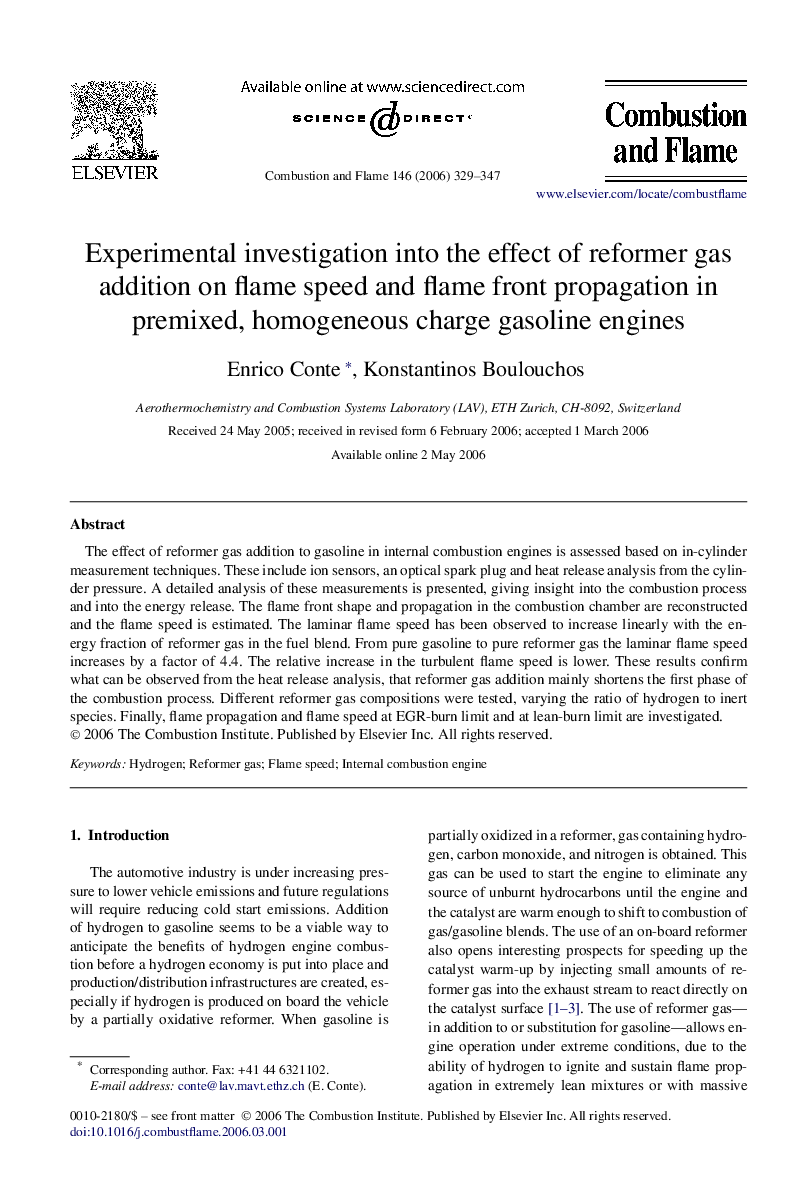| Article ID | Journal | Published Year | Pages | File Type |
|---|---|---|---|---|
| 169922 | Combustion and Flame | 2006 | 19 Pages |
The effect of reformer gas addition to gasoline in internal combustion engines is assessed based on in-cylinder measurement techniques. These include ion sensors, an optical spark plug and heat release analysis from the cylinder pressure. A detailed analysis of these measurements is presented, giving insight into the combustion process and into the energy release. The flame front shape and propagation in the combustion chamber are reconstructed and the flame speed is estimated. The laminar flame speed has been observed to increase linearly with the energy fraction of reformer gas in the fuel blend. From pure gasoline to pure reformer gas the laminar flame speed increases by a factor of 4.4. The relative increase in the turbulent flame speed is lower. These results confirm what can be observed from the heat release analysis, that reformer gas addition mainly shortens the first phase of the combustion process. Different reformer gas compositions were tested, varying the ratio of hydrogen to inert species. Finally, flame propagation and flame speed at EGR-burn limit and at lean-burn limit are investigated.
